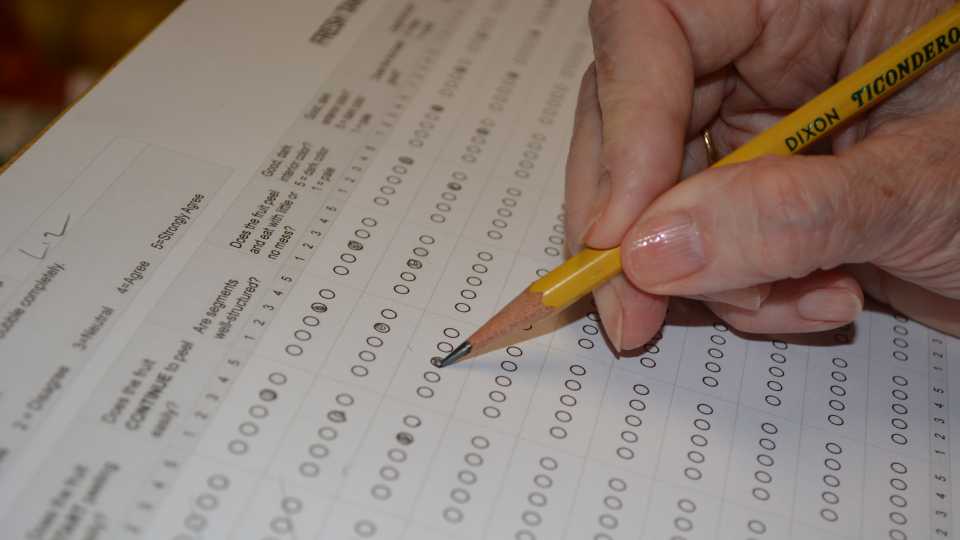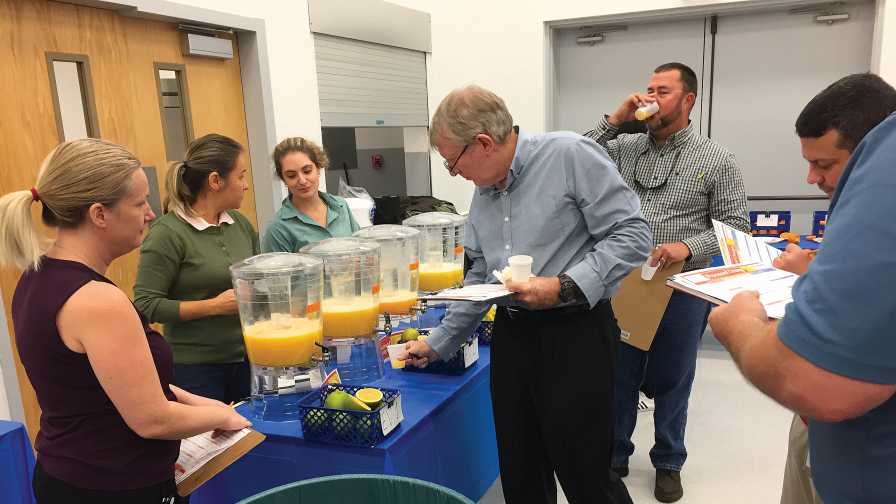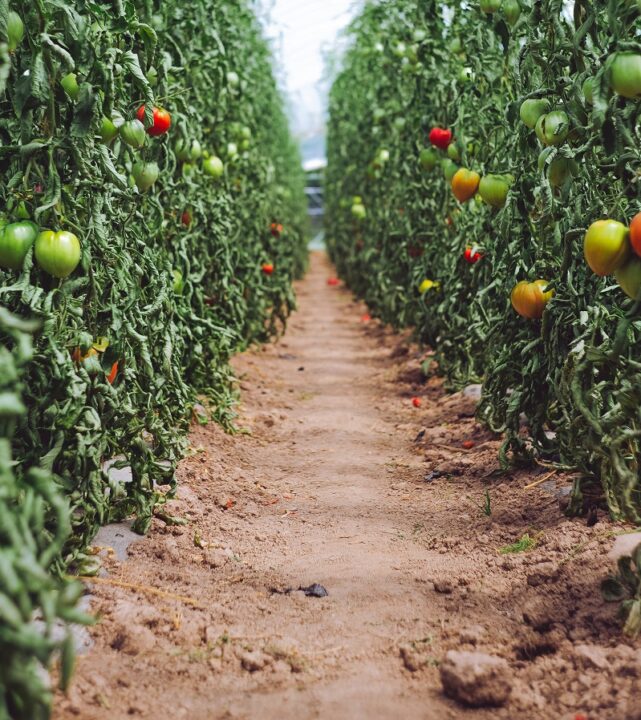Ways You Can Make a Difference at Citrus Variety Display Events

Participants of citrus variety display events often are asked to weigh in on the pros and cons of multiple selections of oranges, tangerines, and grapefruit.
Photo by Frank Giles
The fall brings numerous opportunities for the Florida citrus industry to engage with the plant improvement teams at the UF/IFAS and USDA-ARS. While field trials remain essential to answering the questions of productivity, fruit and fruiting characteristics, rootstock selection, and overall tolerance, step one for many selections has been a favorable showing at citrus variety display events.
When growers, nurseries, packers, processors, gift fruit shippers, and marketers gather to sample and discuss the characteristics and potential marketability and suitability of newly discovered citrus selections, their feedback is important to the variety release process. Plant improvement teams are careful to only include those selections that appear to be healthy and productive in the field. It then becomes necessary to conduct a fruit evaluation process.
Participation in variety displays is a commitment. It takes time from your busy schedule to drive to the event, and it then requires about an hour to complete the process. You are generally asked to complete a survey, and these survey responses are the heart and soul of the entire process. The temptation is to come, sample the selections that appear to have the most promise, make some personal notes, visit with friends and colleagues, and then depart.
This practice provides little value to the plant improvement teams and fails to provide them the information to meet the industry’s new variety needs. We strongly encourage attendees to complete the survey sheets and sample as many selections as possible, regardless of whether the selection appears to fit a particular product line.
Processors may find their interest peaks by a selection initially thought to be only for the fresh market. The inverse also can prove true. No special skills are required; only a love for this industry and a willingness to contribute time and experience.
Selections are generally divided into the general categories of processing orange and orange-like, orange and orange-like for fresh, grapefruit and grapefruit-like, pummelo and pummelo-like hybrids, tangerine/mandarin and specialty hybrids, and occasionally some acid fruit selections. Attendees are increasingly finding that some of the most promising fruit selections no longer fit into our traditional category descriptors. This will present come challenges in classification and marketing, but it’s a good problem to have.
There is much work to be done this fall. Please share this information with your friends, staff and colleagues.
New Varieties Development & Management Corp. extends its appreciation to the UF/IFAS and USDA-ARS teams who make these display events possible. The extensive preparation that goes into these productions does not go unnoticed.

Participants at citrus variety display events have the opportunity to sample both fresh and juice fruit selections.
Photo by Peter Chaires
Citrus Variety Display Events 2019/2020
UF/IFAS Citrus Research and Education Center (CREC), Lake Alfred (all 10 a.m.)
• October 15
• November 14
• December 10
• February 14
UF/IFAS Indian River Research and Education Center (IRREC), Fort Pierce (10 a.m.)
• January 16
UF-Gainesville Field Day and Facility Tour
• November 1 – 10:30 a.m. – Teaching Orchard
As outlined in my recently published article, Dr. Jose Chaparro’s program has undergone significant change to make some of the on-campus citrus land available for other University purposes. Many of the new selections had to be buck-horned back, catalogued, and moved. Therefore, there is a very limited amount of fruit available for sampling. However, despite the longer drive this may require, this is a good opportunity to tour the facilities and see the work being done to contribute to the plant improvement process. Those in northern counties also would benefit from this tour, as much of the material in this smaller program was originally bred for cold tolerance.
USDA-ARS – Whitmore Foundation Farm
• December 5 – 10:30 a.m. (variety sampling and optional farm tour)
• Followed by a Florida Citrus Research Foundation board meeting
The CREC and USDA-ARS plant improvement teams were asked to provide a glimpse into what they expect to include in their fall displays (through December). New discoveries are made each year, as fruit matures, so this is not a comprehensive list. There will be some surprises in the coming weeks.
CREC Team
• The most interesting selections from the past three years, from each fruit category, will be displayed.
• Fresh Selections in the FAST TRACK program are displayed whenever fruit is available.
• Juice samples will be available in November and December, but not likely for October. Most of the juice will likely be unpasteurized, except for promising juice blends available in larger quantities, which may be pasteurized.
• Triploid mandarins with good early brix and color will be shown. A couple of these will be available in October, the rest will be available in November and December.
• Canker-tolerant, early maturing grapefruit, and grapefruit-like.
USDA-ARS Team
• The team hopes to show two of the orange-like hybrids growing in Polk County.
• ‘US Sundragon’ – HLB tolerant orange-like selection recently released into public domain
• A white grapefruit-like selection that appears to have some HLB tolerance (contains seeds)
• A red grapefruit-like selection that will be a little ahead of its maturity (contains some seeds)
• A range of sizes of early maturing, seedless tangerines
• Several more seedless tangerines that will either be in their peak season or slightly ahead of their maturity window. One tangerine is showing useful HLB tolerance, which will be shown in original and low-seeded form.
• Low-seeded ‘Fortune’ x ‘Encore’ crosses that have generated a lot of attention. They will not be fully ripe on Dec. 5, but it’s a good chance to see them.










